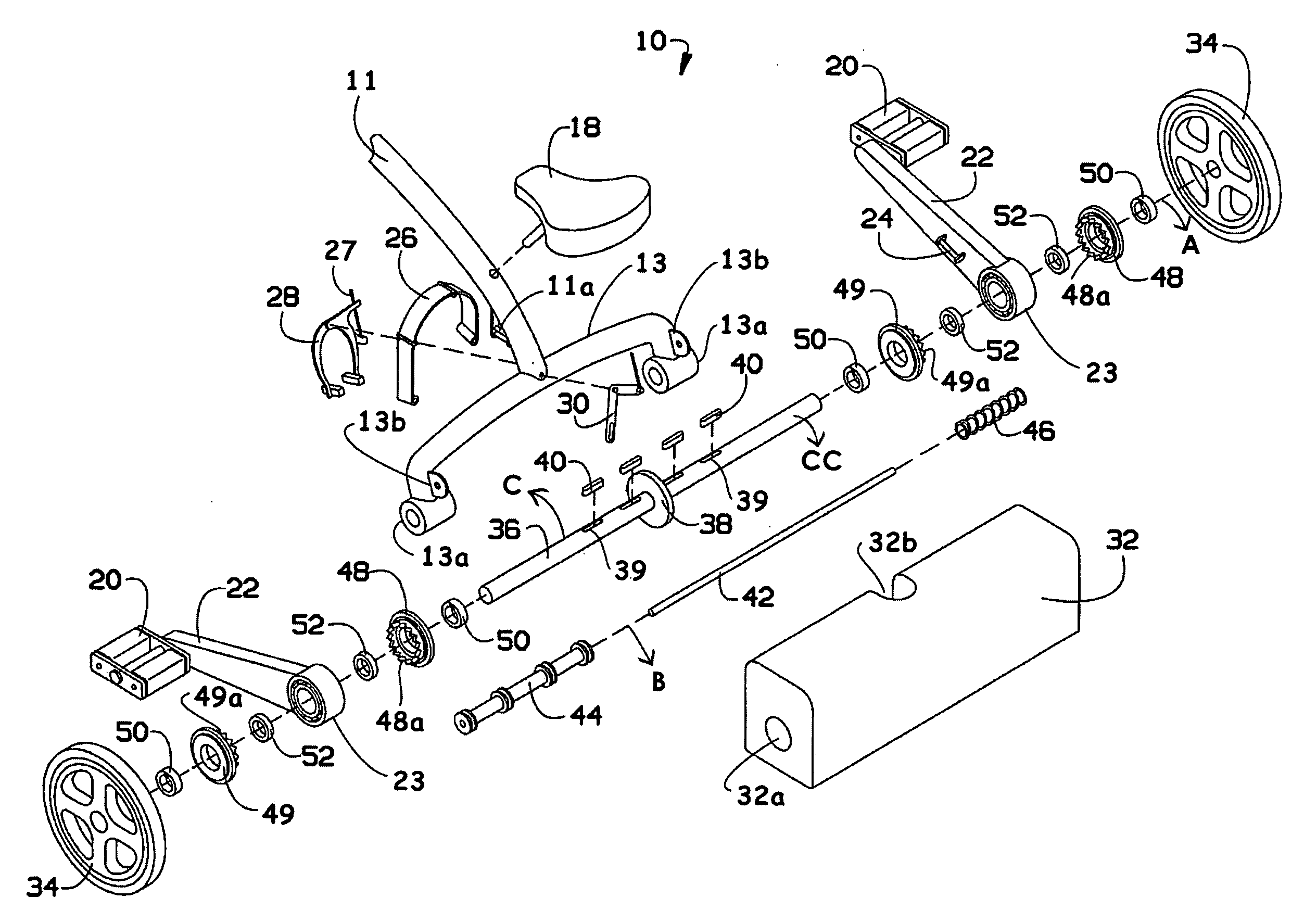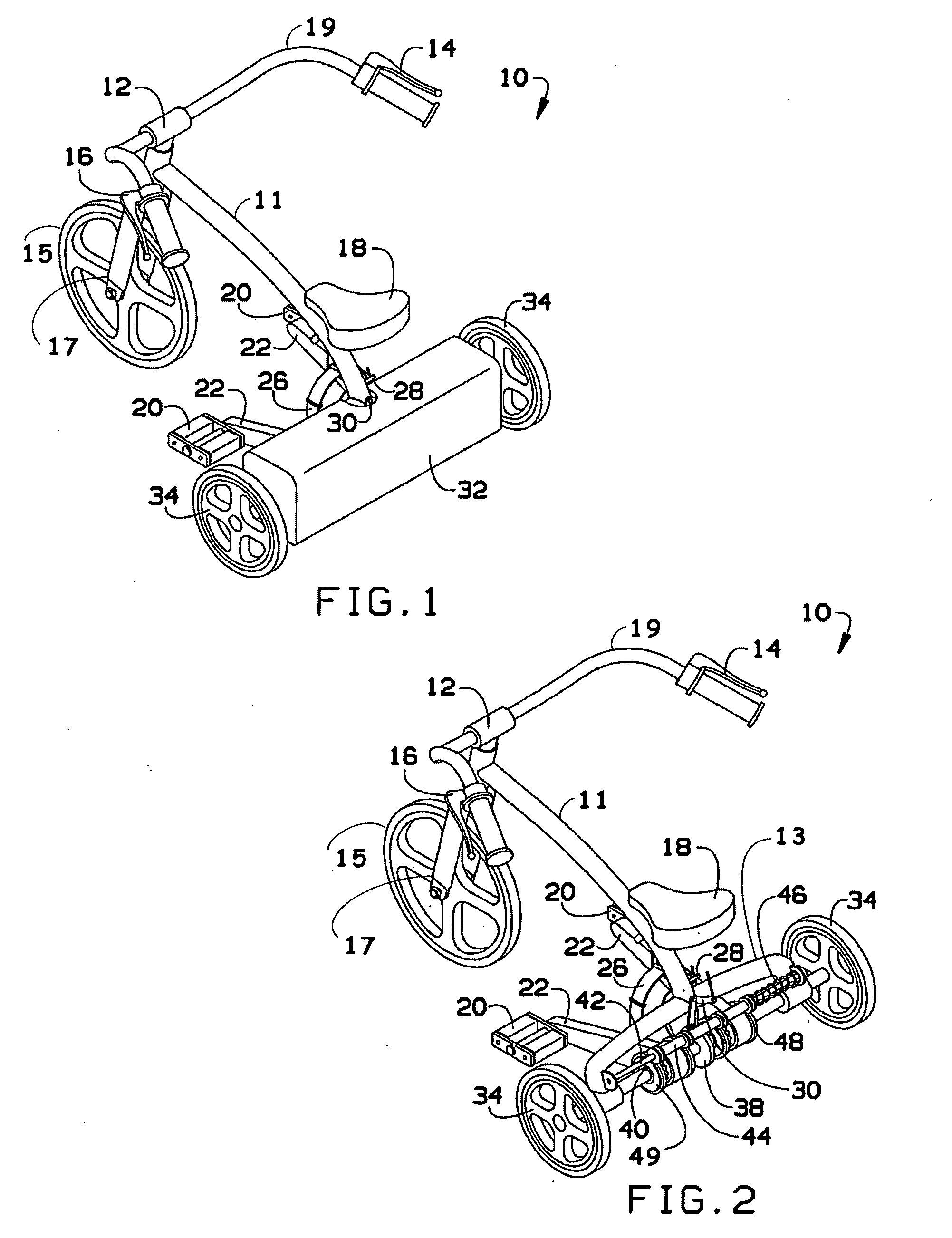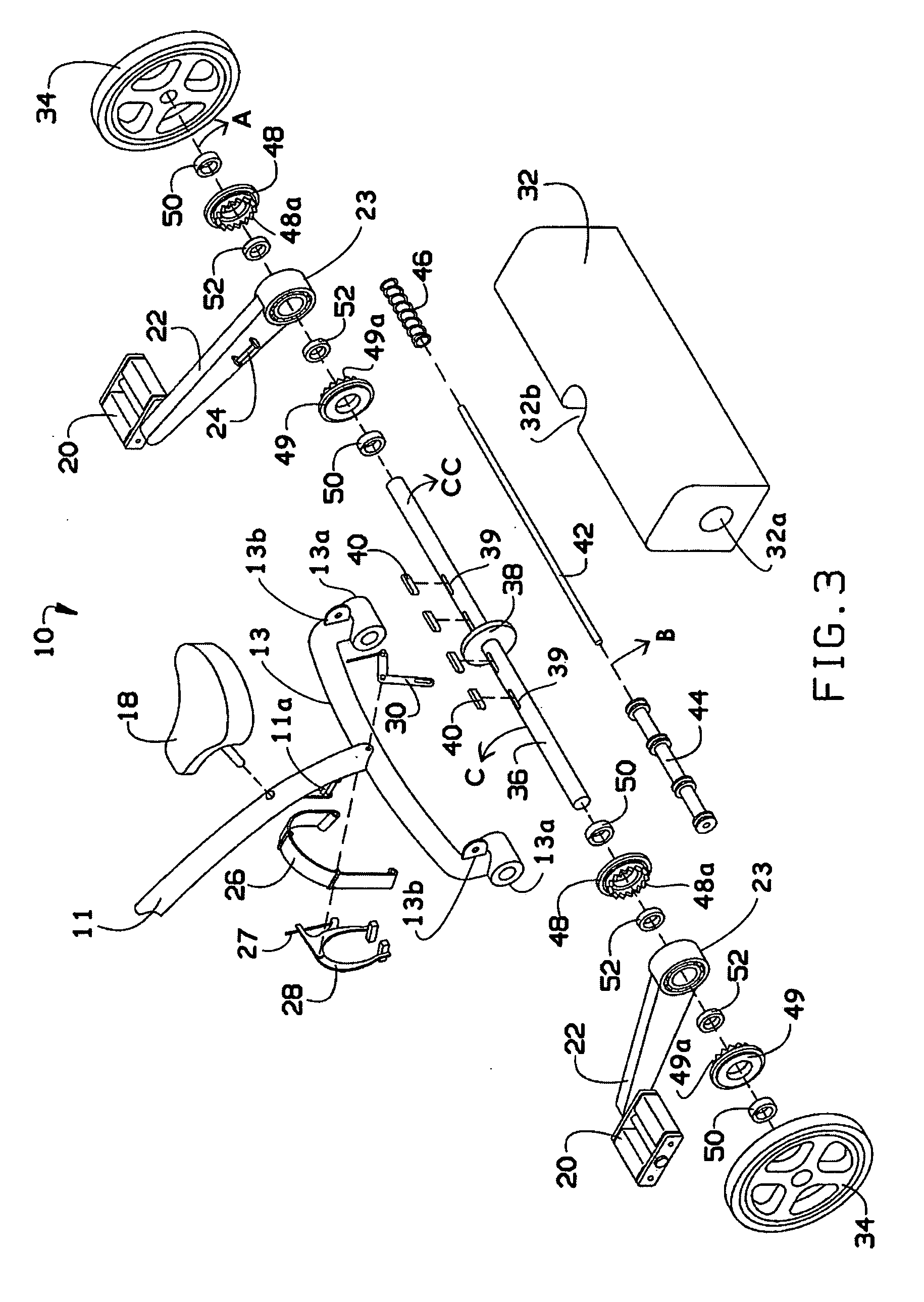Motion transfer mechanism for transferring reciprocal motion to rotary motion and rider-propelled vehicle utilizing motion transfer mechanism
a technology of motion transfer mechanism and reciprocal motion, which is applied in the direction of interengaging clutches, cycles, gearing, etc., can solve the problems of lost motion and wasted energy, difficult for the rider to exert a constant propulsive force, and inefficiently do so. achieve the effect of simple and efficient manner
- Summary
- Abstract
- Description
- Claims
- Application Information
AI Technical Summary
Benefits of technology
Problems solved by technology
Method used
Image
Examples
Embodiment Construction
[0039]While this invention is susceptible of embodiments in many different forms, this specification and the accompanying drawings disclose only a specific form as an example of the use of the invention. The invention is not intended to be limited to the embodiment so described, and the scope of the invention will be pointed out in the appended claims.
[0040]The preferred embodiment of the motion transfer mechanism according to the present invention is described below with a specific application to a rider-propelled vehicle, particularly a tricycle. However, it will be appreciated by those of ordinary skill in the art that the following preferred embodiment of the motion transfer mechanism is also particularly well adapted for other rider-propelled vehicles such as, for example, bicycles, paddle boats, hydrobikes, small aircraft, wheelchairs and skateboards. It will also be appreciated by those of ordinary skill in the art that the preferred embodiment described below is not limited ...
PUM
 Login to View More
Login to View More Abstract
Description
Claims
Application Information
 Login to View More
Login to View More - Generate Ideas
- Intellectual Property
- Life Sciences
- Materials
- Tech Scout
- Unparalleled Data Quality
- Higher Quality Content
- 60% Fewer Hallucinations
Browse by: Latest US Patents, China's latest patents, Technical Efficacy Thesaurus, Application Domain, Technology Topic, Popular Technical Reports.
© 2025 PatSnap. All rights reserved.Legal|Privacy policy|Modern Slavery Act Transparency Statement|Sitemap|About US| Contact US: help@patsnap.com



